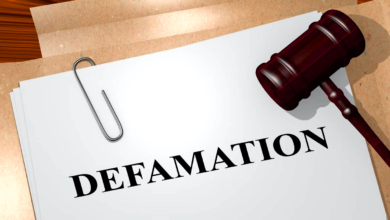AI and Employment Law in England: What HR Must Know in 2025
This article explores the implications of AI and Employment Law in England, offering HR professionals actionable insights to stay compliant.

As artificial intelligence (AI) continues to reshape workplaces across England, HR professionals face a dynamic landscape where AI and Employment Law intersect. In 2025, the integration of AI technologies into recruitment, performance management, and employee monitoring raises critical legal and ethical questions. From ensuring compliance with data protection regulations to addressing potential biases in AI-driven decisions, HR teams must navigate a complex framework to align with UK employment laws. This article explores the implications of AI and Employment Law in England, offering HR professionals actionable insights to stay compliant and leverage AI responsibly.
The Rise of AI in the Workplace
AI technologies, such as machine learning algorithms, predictive analytics, and natural language processing, are transforming how businesses operate. In England, companies are adopting AI to streamline HR processes, enhance decision-making, and improve employee experience. According to a 2024 CIPD report, 68% of UK organizations use AI in some form of HR activity, from automated recruitment tools to employee engagement platforms. However, the rapid adoption of AI and Employment Law necessitates a thorough understanding of legal obligations to avoid costly pitfalls.
Key AI Applications in HR
- Recruitment and Talent Acquisition: AI-powered tools analyze resumes, screen candidates, and predict job fit, reducing manual workload.
- Employee Monitoring: AI systems track productivity, monitor attendance, and assess performance metrics in real time.
- Learning and Development: Personalized training programs powered by AI adapt to individual employee needs.
- Payroll and Benefits Administration: AI automates payroll calculations and benefits management, ensuring accuracy and efficiency.
While these applications offer significant benefits, they also introduce legal risks under AI and Employment Law, particularly in areas like discrimination, data privacy, and employee rights.
Legal Framework Governing AI and Employment Law in England
In England, AI and Employment Law is governed by a combination of UK-specific legislation, EU-influenced regulations, and evolving case law. HR professionals must ensure compliance with the following key frameworks:
1. UK General Data Protection Regulation (UK GDPR)
The UK GDPR, aligned with the Data Protection Act 2018, is a cornerstone of AI and Employment Law. AI systems often process vast amounts of personal data, including sensitive employee information such as performance records, health data, and biometric identifiers. Under UK GDPR, employers must:
- Obtain explicit consent for processing personal data unless another lawful basis applies.
- Ensure transparency by informing employees about AI-driven data processing.
- Conduct Data Protection Impact Assessments (DPIAs) for high-risk AI applications, such as automated decision-making in recruitment.
Failure to comply with UK GDPR can result in fines of up to £17.5 million or 4% of annual global turnover, whichever is higher.
2. Equality Act 2010
The Equality Act 2010 prohibits discrimination based on protected characteristics, such as age, gender, race, and disability. AI systems, if not designed carefully, can perpetuate biases, leading to discriminatory outcomes. For example, an AI recruitment tool trained on historical data may favor male candidates if past hiring trends were male-dominated. HR must ensure that AI and Employment Law aligns with the Equality Act by:
- Regularly auditing AI algorithms for bias.
- Implementing human oversight in AI-driven decisions.
- Providing training on diversity and inclusion to mitigate risks.
3. Employment Rights Act 1996
The Employment Rights Act 1996 protects employees from unfair dismissal and ensures fair treatment. AI-driven decisions, such as automated performance evaluations leading to terminations, must comply with this Act. HR professionals should:
- Ensure AI decisions are transparent and justifiable.
- Provide employees with the right to appeal automated decisions.
4. Emerging AI-Specific Regulations
In 2025, the UK government is expected to introduce more targeted regulations for AI and Employment Law. The proposed Artificial Intelligence Regulation Bill aims to establish accountability for AI systems, requiring employers to disclose when AI is used in decision-making processes. HR teams should stay updated on these developments to remain compliant.
Key Challenges in AI and Employment Law for HR
The integration of AI into HR processes presents several challenges under AI and Employment Law. Below, we explore the most pressing issues and provide guidance for HR professionals.
1. Bias and Discrimination in AI Systems
AI systems are only as unbiased as the data they are trained on. If historical data contains biases, AI may replicate them, leading to discriminatory outcomes. For instance, a 2023 case in the UK highlighted how an AI recruitment tool downgraded candidates from certain ethnic backgrounds due to biased training data.
HR Actions:
- Conduct regular audits of AI systems to identify and mitigate biases.
- Use diverse datasets to train AI models.
- Involve HR and legal teams in the design and deployment of AI tools to ensure compliance with AI and Employment Law.
2. Transparency and Employee Trust
Employees have the right to know when AI is used in decisions affecting their employment, such as promotions or terminations. Lack of transparency can erode trust and lead to legal challenges. The UK GDPR emphasizes the “right to explanation,” requiring employers to clarify how AI decisions are made.
HR Actions:
- Develop clear policies on AI usage and communicate them to employees.
- Provide training to help employees understand AI processes.
- Ensure human oversight in critical AI-driven decisions to maintain trust.
3. Data Privacy and Security
AI systems rely on large datasets, raising concerns about data privacy under AI and Employment Law. Unauthorized access to employee data or data breaches can result in significant legal and reputational damage.
HR Actions:
- Implement robust cybersecurity measures to protect employee data.
- Limit data collection to what is necessary for AI processes.
- Regularly update DPIAs to address new risks.
4. Automated Decision-Making
Automated decision-making, such as AI-driven hiring or performance evaluations, is regulated under Article 22 of the UK GDPR. Employees have the right to not be subject to decisions based solely on automated processing unless specific conditions are met.
HR Actions:
- Ensure human intervention in significant AI-driven decisions.
- Provide employees with the opportunity to contest automated decisions.
- Document the rationale behind AI-driven decisions to demonstrate compliance with AI and Employment Law.
Best Practices for HR in 2025
To navigate the complexities of AI and Employment Law, HR professionals should adopt the following best practices:
1. Develop an AI Governance Framework
An AI governance framework ensures that AI systems are used ethically and compliantly. This framework should include:
- Policies and Procedures: Define how AI will be used in HR processes, from recruitment to performance management.
- Accountability Structures: Assign responsibility for overseeing AI compliance to specific roles, such as a Data Protection Officer.
- Regular Audits: Conduct periodic reviews of AI systems to ensure alignment with AI and Employment Law.
2. Train HR Teams on AI and Employment Law
HR professionals must be well-versed in AI and Employment Law to make informed decisions. Training should cover:
- UK GDPR and data protection principles.
- Identifying and mitigating AI biases.
- Legal obligations under the Equality Act 2010 and Employment Rights Act 1996.
3. Engage with Employees
Transparency is key to maintaining employee trust. HR should:
- Communicate openly about AI usage in the workplace.
- Provide channels for employees to raise concerns about AI-driven decisions.
- Involve employee representatives in discussions about AI implementation.
4. Partner with Legal and IT Experts
Collaboration between HR, legal, and IT teams is essential to ensure compliance with AI and Employment Law. Legal experts can provide guidance on regulatory requirements, while IT teams can ensure the technical integrity of AI systems.
5. Monitor Regulatory Developments
The UK’s approach to AI and Employment Law is evolving. HR professionals should stay informed about new regulations, such as the proposed Artificial Intelligence Regulation Bill, and adapt their practices accordingly.
Case Studies: AI and Employment Law in Action
Case Study 1: AI in Recruitment
A large UK retailer implemented an AI-based recruitment tool to screen candidates. However, the tool was found to discriminate against female applicants due to biased training data. The company faced a lawsuit under the Equality Act 2010 and was required to pay significant compensation. To resolve the issue, the retailer retrained the AI model with diverse data and introduced human oversight in the hiring process.
Lesson: Regular audits and diverse datasets are critical to ensuring compliance with AI and Employment Law.
Case Study 2: Employee Monitoring
A tech firm in London used AI to monitor employee productivity, including keystroke tracking and email analysis. Employees were not informed about the extent of monitoring, leading to a breach of UK GDPR. The Information Commissioner’s Office (ICO) fined the company £1.2 million for failing to ensure transparency.
Lesson: Transparency and employee consent are non-negotiable under AI and Employment Law.
The Future of AI and Employment Law in England
As AI technologies advance, the legal landscape for AI and Employment Law will continue to evolve. In 2025, HR professionals can expect:
- Stricter Regulations: The UK government is likely to introduce more robust AI regulations, focusing on accountability and transparency.
- Increased Scrutiny: Regulatory bodies like the ICO will intensify oversight of AI in workplaces.
- Ethical AI Standards: Industry bodies, such as the CIPD, may develop ethical AI guidelines for HR.
To prepare for these changes, HR teams should proactively adopt ethical AI practices and invest in compliance training.
Conclusion
The integration of AI into HR processes offers immense potential to enhance efficiency and decision-making. However, it also introduces significant legal and ethical challenges under AI and Employment Law. By understanding the UK GDPR, Equality Act 2010, and other relevant regulations, HR professionals can mitigate risks and harness AI responsibly. Developing robust governance frameworks, training staff, and maintaining transparency are critical steps to ensure compliance with AI and Employment Law in England in 2025.
By staying informed and proactive, HR teams can navigate the complexities of AI and Employment Law, fostering a workplace that is both innovative and compliant. As AI continues to shape the future of work, HR’s role in balancing technology and legal obligations will be more important than ever.











